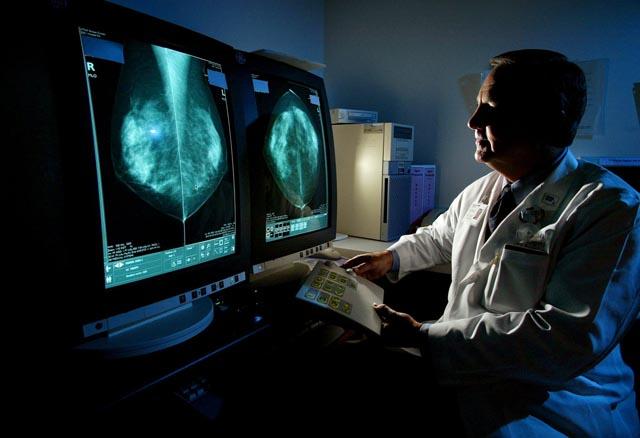You are here
Breast cancer screening a complex mix of benefits, risk
By Reuters - Apr 02,2014 - Last updated at Apr 02,2014

NEW YORK – A review of 50 years of studies on the risks and benefits of yearly mammograms has tied them to a 19 per cent drop overall in breast cancer deaths, but whether a woman benefits depends on factors such as age and family history, US researchers said on Tuesday.
A report published in the Journal of the American Medical Association is the latest attempt to sort out mixed messages about mammogram screening, once an annual chore whose merits have been questioned by some studies suggesting that mammograms save far fewer women than previously thought.
“It would be easier for everyone if there was a clear, pre-specified pathway with a given risk profile, but we don’t have that because our data is not perfect and everyone is different,” Dr Lydia Pace of Brigham and Women’s Hospital in Boston, who led the study, told Reuters Health. “I wish that we had more certainty.”
Five years ago, US women routinely started getting annual mammograms at age 40. That practice came under fire in 2009 when the US Preventive Services Task Force, an independent group of experts that advises US policy makers, said evidence suggested that women of average breast cancer risk could get mammograms every two years starting at age 50.
A large, 25-year Canadian study published in February found yearly mammogram screenings did not reduce the chance that a woman would die of breast cancer and confirmed earlier findings that many abnormalities detected by these X-rays would never have been fatal, even if untreated.
Despite mounting evidence, many US organizations still recommend annual mammograms starting at age 40, but most other countries have guidelines similar to the task force’s recommendation, Pace said.
For their review, Pace and Dr Nancy Keating, also of Brigham, gathered several previous studies that examined the risks and benefits of mammograms. They found that annual mammograms reduced breast cancer deaths by 19 per cent on average, but the actual decrease depended on a woman’s age.
For example, if 10,000 women in their 40s received an annual mammogram, doctors would find 190 invasive breast cancers. Of those, mammography would save about five lives but 25 women would have died with or without the mammogram.
Among women in their 50s who had a yearly mammogram, the benefits increased slightly, with between three and 32 lives saved for every 10,000 women screened over the next 15 years.
Related Articles
A Canadian study that many experts say has major flaws has revived debate about the value of mammograms. The research suggests that these screening X-rays do not lower the risk of dying of breast cancer while finding many tumours that do not need treatment.
In the latest major study to consider whether the dangers of mammograms outweigh the benefits, experts say the tests can reduce the chances of dying from breast cancer by nearly 30 per cent and that national screening programmes should continue.
PITTSBURGH — In the ever-changing, often complicated world of breast cancer detection, a large study led by a Pittsburgh researcher sh











